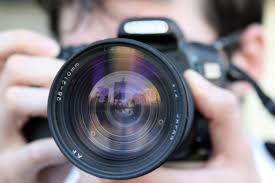Tips For Successfully Capturing A Great Photograph

Are you ready to make your ideas come to life? Do you know how to begin? Are you aware of what will work to make your shots better? If you aren’t sure or haven’t got any idea about how to answer those questions, then read on for some great tips that will get you started.
Create depth when you shoot landscapes. The foreground is very important in landscape photography; place an object in the foreground to create a sense of depth and scale. If you want more sharpness in your photos, especially in the fore- and background, opt for a smaller aperture. This means an aperture of f/8 in a general digital camera or no more than f/16 in full-frame SLR cameras.
Practice makes perfect, so buy the largest memory card you can for your camera, and enable yourself to take a plethora of practice shots. If you have a memory card that is large enough, you will never worry about being able to store additional photos on your card. If you use a big memory card, you will be able to shoot using the RAW format. Using the RAW format will give you more flexibility when you are editing your photos.
Snap some shots of your travel souvenirs. You can take pictures of the places you make your purchases, or snap photos of the souvenirs in other interesting places. These pictures can be placed in an album to create the story of your trip, with memories to treasure in future years.
When photographing your subject, try to get as close as you can. Nothing is worse than viewing a photo of a subject that is too far away to see any clear details or colors. Get closer and make it easy to see what you are taking a photo of.
Quite often, digital cameras have an automatic flash function that automatically goes off when the light is dim. This is good for a quick spur-of-the-moment picture, but for something more professional, use an external flash unit that is designed to give you a broad lighting range. Ensure that there is a “hot shoe”, or port that allows external flash, on top of the camera. Most devices available can sync perfectly with compatible cameras.
Learn composition and that less is much more with photographs. A photo does not need to be overly cluttered. Simplicity is sometimes more beautiful and mastering the ability to know when can transcend your photos to a new level.
Before shooting a large event, warm up your skills by catching glimpses of small details. A makeup bag or bouquet often makes a dramatic, romantic statement, and makes for an accessible subject to start with. Of course, there’s also the possibility that you’ll catch a beautiful, spontaneous shot or two.
A lot of the time you will have the main subject looking right at the camera. For some unique pictures, try to have your subject look off the camera, have them focus on something outside the field of view of the camera. Also, you can try having them focus on something that is in the frame, but still not looking at the camera.
If you are photographing a bride or someone else in white, a contrasting background will help make their clothing stand out. Many cameras will auto-focus so that they can get a “reading” of every nuance and shade in the photograph’s range. White is almost always “washed out” in shots like this.
When you are shooting a photo, do so quickly. Moments are fleeting, if you take too long getting ready for a shot, your subject may be long gone by the time you take the photograph. The moment can be gone when smiles get weary, children and pets get restless, or the scene changes. Don’t risk missing a great shot because you’re worried about getting all the settings on your camera correct.
If you want to shoot good photos, make sure your subject is in focus at all times. When a photo is properly focused, the result will be perfectly composed shots. Particularly when you are just beginning, you should try and have your subject in the center of your pictures. The background is independent and responsible for itself.
Play around with editing your images. The amount of software available on the market for photo editing is truly astounding. Choose a package that has a lot of options when it comes to editing your photos. A program that is easy to learn is best.
Extensions made for your lenses are called filters. The filter screws onto the lens, and they have varied purposes. The most common filter is the UV filter. This type of filter can protect the camera lens from the effects of direct sunlight. It could also protect your lens if you ever drop it.
If you want higher-quality pictures, get a tripod. Your tripod needn’t be expensive or fancy. Even minor camera movement will affect your shots if you are using a slower shutter speed. Blur can be fixed by investing in an inexpensive camera tripod. The professionalism of your photos can be enhanced, and nasty surprises eliminated, simply with the purchase of a good-quality tripod.
After reading the tips above, you should feel confident that you can start creating concepts for your photographs. Have you found a good starting point for taking photos? Are you prepared with the information you need to take great shots? If you have the answers to these simple questions, then you now have a grasp of the tips you were presented and will be able to take excellent photographs.